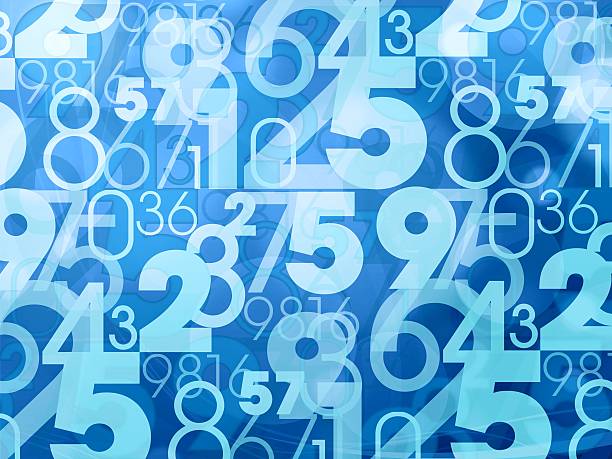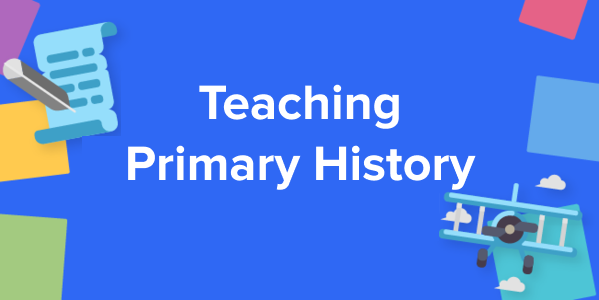National Numeracy Day Activities: Fun for KS1 & KS2 Maths

Number day maths activities can make this year's National Numeracy Day engaging for your class. The day itself is all about increasing confidence in the maths skills we use in our everyday life, lending itself perfectly to a day of fun maths activities and challenges in the classroom! Read on for some fun numeracy activities to inspire your KS1 or KS2 class with a love of numbers, great not only for National Numeracy Day but all year round.
In this article:
When is National Numeracy Day?
National Numeracy Day is on Wednesday 22nd May 2024. It is a day dedicated to all things numbers and celebrates how we use numeracy in our everyday lives. Thanks to our partners, Pango can provide the perfect number day activities to engage your KS1 and KS2 maths classes. Discover our full range of maths lesson resources you can be using this term.
What is Numeracy?
Numeracy is about how we use numbers in our everyday lives. The Oxford Learners Dictionary defines Numeracy as “the ability to understand and work with numbers”.
Maths, on the other hand, as defined by the Cambridge Dictionary, is “the study of numbers, shapes, and space, using reason and usually a special system of symbols and rules for organising them”.
If you’re like me, you’ll have never actively thought about the difference between Maths and Numeracy but the two, whilst related, are different but each have their purpose.
Just like our teachers and parents told us and continue to tell children today, numeracy is important for our everyday lives and despite us all carrying calculators around in our pockets remains a key skill today.
So, now you’re sold on the importance of numeracy (if you weren’t already!), What activities can you use to inspire your class with a love of numeracy?
Fun Numeracy Day Activities for the Classroom:
-
Host a Big Number Natter
National Numeracy, the charity responsible for National Numeracy Day, is prompting everyone to engage in the Big Number Natter on the 22nd May 2024, encouraging people to think about how they use numeracy every day and the numeracy-based challenges they face.
Why not take this activity idea and host a big number natter in assembly, forms or maths lessons? Encourage pupils to identify times in their everyday lives when they use maths and numeracy. Whether it’s:
- timing how long they brush their teeth
- calculating how much change they’ll get back from buying a chocolate bar
- measuring ingredients whilst baking a cake
- dividing the number of treats left between their dogs
There are countless times pupils use maths every day.
Hosting a big number natter activity for number day is great for a couple of reasons. Not only will it make pupils aware of how fundamental numeracy is (a fact I can’t guarantee they’ll be happy to realise), it will also give pupils confidence that they can do maths. Frequently, pupils label themselves as ‘bad at maths’ or ‘rubbish with numbers’ but helping them realise they’re successfully using their numeracy skills more often than they realise will instil them with confidence in their ability.
-
Get Baking!
Who knew getting confident with numeracy could be a tasty activity? This National Numeracy Day, get your pupils involved with baking, a method guaranteed to make learning fun.
If working in KS1, encourage children to follow a recipe and measure and weigh ingredients. This is a great number day maths activity for promoting number recognition.
If you’ve got a KS2 class, think about adding a challenge into this number day activity. Try giving the class a recipe for half the quantity they need to make and asking them to double it (or 1.5x it for Year 5s and 6s, ability dependent). I can’t count the number of times I’ve needed to adjust the quantity of a recipe and realised that my numeracy skills could do with some brushing up on!
-
Bingo
If you’re short on time, Bingo is a number day maths activity to play in form or as a starter activity to a fun maths lesson. The best part? There’s no need to spend hours finding downloadable Bingo cards or standing in the print room. Simply put a selection of numbers up on the board and ask pupils to draw a Bingo grid on a mini whiteboard or paper. Ask students to select 9 numbers from the board to enter into their grid and then as the teacher, shuffle the numbers and call them one by one.
This maths challenge, for Numeracy Day, is great for promoting number recall and recognition but if you want to challenge your class further, particularly at KS2, give students sums rather than the number. For example, if one of the numbers was ‘9’, you could read out ‘3x3’ so that pupils have to answer the question before striking off the number.
-
Here’s the Answer, What’s the Question?
This maths game is perfect as a fun KS2 Numeracy Day activity, practising problem-solving skills and encouraging children to apply numeracy to real-life contexts.
The maths game can be played in two ways. You can present pupils with a number and ask them to find a sum that has this number as the answer. For an added challenge to this number day activity, get inspired by Countdown and select the numbers they need to use in their calculation.
Alternatively, you can get students to think about the worded problem and the context of this answer. For example, if the answer is 3, ask them to think about a real-life calculation or worded problem with the answer 3. There is no singular answer here but as an example solution, the numeracy problem could be:
‘I am at a shop and have £15 to spend. I spent £7 on groceries and £5 on toiletries. How much do I have left to buy a treat with?’
-
Games, Games and More Games!
If there’s one way to make a numeracy lesson fun and engaging, it’s games! There's a whole host of numeracy and maths games online that require little teacher prep but are fun and educational for the whole class.
Get The Buzz! are a great resource for this. They’re committed to developing fluency in the fundamentals of maths through games and challenges, perfect not just for a National Numeracy Day activity, but as a consolidation activity across the year.
Get The Buzz! have a whole bank of KS1 and KS2 maths games. From times tables to counting, to spending money, they have a great variety to engage your class. Check out their library of resources.
Going beyond Numeracy Day activities with Pango
I hope you’re feeling inspired and ready to engage your class with a love of numeracy! Maybe you’re even surprised at how fundamental numeracy is to our daily life.
Looking for more inspiration? Pango has a host of KS1 and KS2 lesson resources waiting to be discovered. Created by teachers, for teachers, we understand how important it is to keep your students engaged. From geography lessons and English lessons to PSHE lessons, each is valuable to help shape a child's learning. Create a free account and get exploring.


